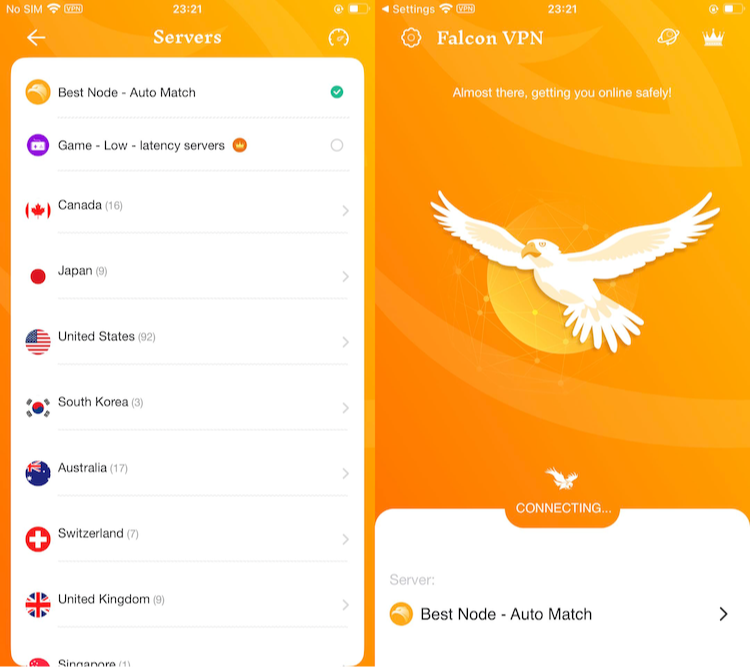Ever wondered, "What is a subnet mask, and why does it matter?" If you're setting up a network at home, configuring an office, or searching for the best iPhone VPN, understanding subnet masks will help you make sense of how data travels and how networks stay efficient and secure.A subnet mask is a crucial tool in networking, separating an IP address into a network ID and host ID to ensure proper communication between devices. This process allows devices to determine whether they are part of the same network, improving organization, security, and management. As noted by GeeksforGeeks, it supports efficient data flow control, helping optimize network operations ("Role of Subnet Mask," GeeksforGeeks).

The Subnet Mask, Simplified
Breaking Down the Concept
Picture this: Your IP address is like a mailing address, with a 'street name' (the network) and a 'house number' (the device). A subnet mask divides these parts, making sure each data packet reaches not just the right network but the right device.
A subnet mask is a 32-bit number in IPv4 (or 128 bits for IPv6) that splits your IP address into a network portion and a host portion.
-
The network part directs traffic to the right network.
-
The host part pinpoints the exact device.
Example of a Subnet Mask
If your IP is 192.168.123.132 and your subnet mask is 255.255.255.0:
-
The first three octets (
192.168.123) are the network. -
The last octet (
132) points to your device within that network.
How to Find Your Subnet Mask
On macOS:
-
Open System Preferences and select Network.
-
Pick your current network and click Advanced.
-
Visit the TCP/IP tab. Your IP address and subnet mask appear side by side.
On Windows:
-
Go to the Control Panel and open Network and Sharing Center.
-
Click on your network name, then hit Details.
-
A small window will pop up with your subnet mask listed.
On iOS:
-
Open Settings and tap Wi-Fi.
-
Find your connected network and tap the “i” icon.
-
Your subnet mask shows up alongside other network information.
On Android:
-
Head to Settings > Wireless & Networks > Wi-Fi.
-
Select the connected Wi-Fi network.
-
Your subnet mask appears within the network details.
Curious about keeping your connection private on mobile? For stronger online privacy, pair your device with the best VPN for Android.
Types and Classes of IP Addresses
Class-Based IP Structure
-
Class A: Subnet mask
255.0.0.0, first octet 0-127, supports ~17 million hosts per network. -
Class B: Subnet mask
255.255.0.0, first octet 128-191, supports ~65,000 hosts. -
Class C: Subnet mask
255.255.255.0, first octet 192-223, ideal for LANs. -
Class D: Reserved for multicasting (224-239), no subnet mask.
-
Class E: Experimental (240-255), no subnet mask.
IP Address Types
-
Static vs. Dynamic
-
Public vs. Private
Tip: Most users now rely on classless addressing. Knowing the basics helps when troubleshooting or configuring openVPN ports or working with vpn port mapping.
The Importance of a Subnet Mask
Why It Matters
You might be wondering, what is a subnet mask and does it really matter? Absolutely. A subnet mask determines how your network divides and routes traffic. It keeps data moving efficiently within its intended subnet, minimizes unnecessary traffic, and strengthens performance.
It’s also a crucial detail if you’re configuring a transmission port closed vpn or exploring how to use FalconVPN on xfinity router for secure home networking.
CIDR and Modern Networking
Classless Inter-Domain Routing (CIDR)
Introduced in 1993, CIDR replaced the traditional class system, improving IP address allocation and reducing routing table size.
-
VLSM (Variable-Length Subnet Masking): Allows flexible subnet sizes (e.g.,
/12in192.168.123.132/12). -
Supernets: Groups multiple IP ranges for more efficient routing.
Routing Efficiency
CIDR reduces chaos in routing tables by grouping networks, which simplifies how data finds its destination.
What Is a Subnet Mask Calculator?
Your Networking Shortcut
A subnet mask calculator simplifies networking by breaking down complex IP configurations into manageable details:
-
Subnet Mask: Identifies the division between network and host parts.
-
Network Addresses: Shows which IPs belong to each subnet.
-
Usable Host Ranges: Defines available addresses within a subnet.
-
CIDR Notation Support: Converts easily between formats.
-
Subnet Range: Identifies starting and ending IPs.
-
OpenVPN Ports: Helps in VPN setups and port mapping.
Tools like IPv4 to IPv6 converters also ensure compatibility in modern networks. For VPN use, knowing openvpn ports makes configuration easier.
Handy Table for Subnet Masks and CIDR Notation
| CIDR | Subnet Mask | Wildcard Mask |
|---|---|---|
| /32 | 255.255.255.255 | 0.0.0.0 |
| /31 | 255.255.255.254 | 0.0.0.1 |
| /30 | 255.255.255.252 | 0.0.0.3 |
| /29 | 255.255.255.248 | 0.0.0.7 |
| /28 | 255.255.255.240 | 0.0.0.15 |
| /27 | 255.255.255.224 | 0.0.0.31 |
| /26 | 255.255.255.192 | 0.0.0.63 |
| /25 | 255.255.255.128 | 0.0.0.127 |
| /24 | 255.255.255.0 | 0.0.0.255 |
| /23 | 255.255.254.0 | 0.0.1.255 |
| /22 | 255.255.252.0 | 0.0.3.255 |
| /21 | 255.255.248.0 | 0.0.7.255 |
| /20 | 255.255.240.0 | 0.0.15.255 |
| /19 | 255.255.224.0 | 0.0.31.255 |
| /18 | 255.255.192.0 | 0.0.63.255 |
| /17 | 255.255.128.0 | 0.0.127.255 |
| /16 | 255.255.0.0 | 0.0.255.255 |
| /15 | 255.254.0.0 | 0.1.255.255 |
| /14 | 255.252.0.0 | 0.3.255.255 |
| /13 | 255.248.0.0 | 0.7.255.255 |
| /12 | 255.240.0.0 | 0.15.255.255 |
| /11 | 255.224.0.0 | 0.31.255.255 |
| /10 | 255.192.0.0 | 0.63.255.255 |
| /9 | 255.128.0.0 | 0.127.255.255 |
| /8 | 255.0.0.0 | 0.255.255.255 |
Useful Network Tools and Features
Besides subnet calculators, other tools to explore include:
-
IPv4 to IPv6 Converter: For compatibility with modern systems.
-
Subnet Mask Calculators: Quickly view all available subnet divisions.
-
IPv4 CIDR Calculator: View IP info at a glance.
-
VPN Utilities: Learn about vpn port mapping or configuring a transmission port closed vpn.
Get Started with Secure Browsing: Download Falcon VPN
Whether you're setting up a subnet or configuring a transmission port closed VPN, maintaining privacy across devices is essential. Falcon VPN helps you protect your network traffic, access restricted content, and improve connection flexibility with features like VPN port mapping and openVPN ports support.
Follow these steps to get started with Falcon VPN:

- Get the VPN App
Head over to FalconVPN and download the appropriate version for your device. - Complete Installation
Open the downloaded file and follow the prompts to install the VPN app on your device. - Open the VPN App
Launch the app after installation. Select your preferred server location. - Connect to Secure Your Internet
Hit the “Connect” button to encrypt your connection and protect your online activities.
FAQ: Subnet Masks, CIDR, and VPN Port Mapping
What is a subnet mask in simple terms?
A subnet mask is a number that tells your device which part of an IP address is the network and which part is the host. It’s essential for directing traffic correctly.
Why do I need to understand subnet masks?
Understanding subnet masks helps you troubleshoot connections, configure routers, and optimize performance—especially when setting up VPNs or managing openVPN ports.
What is a transmission port closed VPN?
A transmission port closed VPN ensures certain ports remain closed to protect your network from unauthorized data transmission. It enhances security, especially when managing sensitive configurations.
What is VPN port mapping?
VPN port mapping forwards a specific port on your device through the VPN, enabling remote access or application-specific traffic. It’s useful for gaming, servers, or secure file sharing.
Can I use a subnet mask calculator for VPN setup?
Yes! A subnet mask calculator helps visualize how devices on a VPN are segmented and routed, making it easier to configure private connections and understand CIDR ranges.

John Miller is a tech enthusiast and online privacy advocate with over 8 years of experience in VPN and cybersecurity. He writes expert guides to help users navigate VPN options, enhance their online security, and protect their privacy on the internet.



